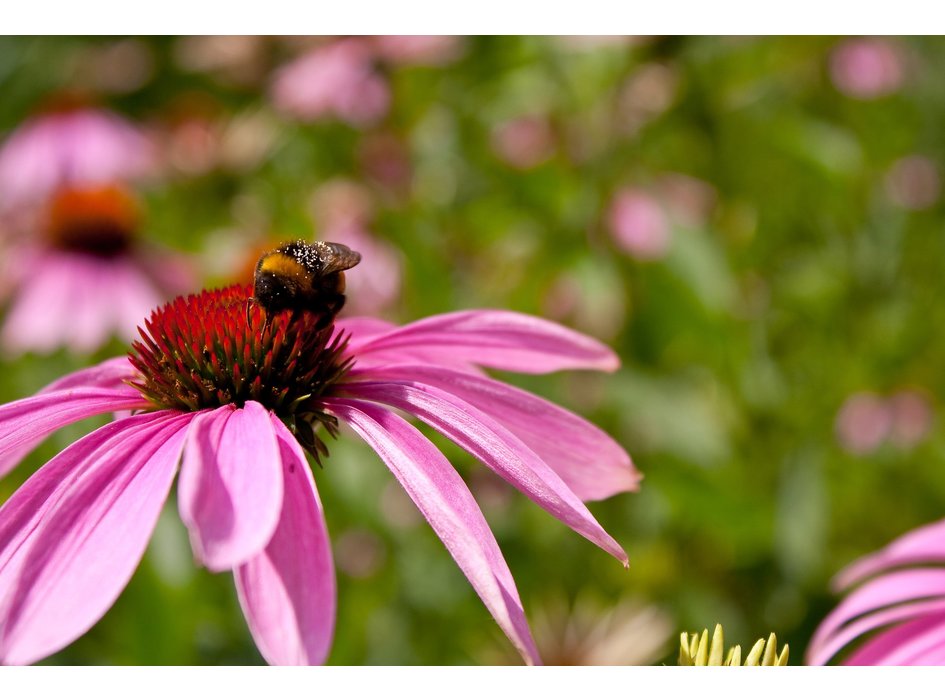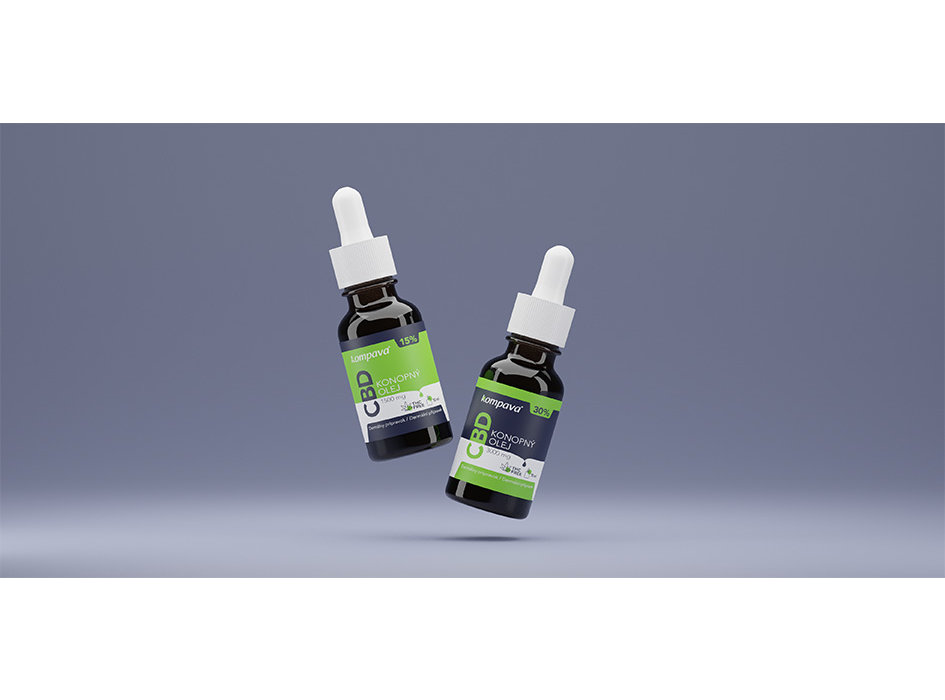Obsah
The therapeutic use of cannabis has been known since ancient times. News of its use is provided by, for example, ancient Chinese legends - Emperor Shen Neng added cannabis as an ingredient in tea, patients suffering from malaria or rheumatism freely used to drinking medicinal cannabis tea.
It is China that marks the beginning of the subsequent spread of cannabis throughout the world. However, we would not have known any of the many beneficial effects without the functioning of the endocannabinoid system, which makes cannabis able to treat a wide range of diseases.

Science is thought to have evolved in the bodies of primitive organisms about 600 million years ago, but it was only recently discovered. However, many uncertainties remain in the field of research, but its importance in the human body is incalculable, especially due to its enormous therapeutic potential.
There are a number of cannabinoid receptors in our body that are responsible for the various processes that take place in our body.
Organisms from simple mantles to perfectly developed vertebrates on top share with humans an endogenous cannabinoid system responsible for the regulation and balance (homeostasis) of the body.
The endocannabinoid system was discovered in the mid-1990s by Raphael Mechoulam. This doctor, originally from Israel, is one of the world's leading promoters of the healing component of cannabis and was even the first to identify and name THC.
What is the endocannabinoid system?
It is an important cellular signaling system that helps to maintain homeostasis in particular.
Homeostasis is a state of balance in the body in which organs function optimally and maintain physiological, cognitive and emotional balance.
The endocannabinoid system is absolutely essential for human health. Throughout life, it helps a person to adapt to the constantly changing external environment.
Dustin Sulak, an American physician who has treated more than 1,800 patients with cancer, Crohn's disease, epilepsy, insomnia and other diseases, expressed the importance of the endocannabinoid system in one sentence: "The endogenous cannabinoid system is the most important system responsible for production but also stability of the organism - human health."
What makes up the endocannabinoid system?
The endocannabinoid system consists of three key components:
Endocannabinoids
Endocannabinoids are endokenous cannabinoids - chemical compounds that are produced by the body itself. Thanks to them, signals are transported between nerve cells (neurotransmitters).
The two main endocannabinoids are:
- Anandamide (AEA)
It is the first endocannabinoid discovered by scientists, which promotes creativity and a feeling of inner happiness. Its name comes from the word "ananda", which in translation from Sanskrit means bliss. Elevated concentrations of anandamide occur in the brain. Anandamide is found, for example, in cocoa beans or cocoa beans. in chocolate.
- 2-Arachidonoylglycerol (2-AG)
Their concentrations vary depending on needs - the human body synthesizes them "on request". They have a local effect and a short lifespan.
Endocannabinoid receptors
These are proteins deposited on the cell membrane that bind to endocannabinoids. Thus, there is a bond between them, which represents the beginning of nerve activity.
The two main identified endocannabinoid receptors are:
- CB1 receptors found in the central nervous system (CNS);
- CB2 receptors found in the peripheral nervous system and immune cells.
Many tissues in the human body contain both types of receptors, each of which, despite the same localization, is realized during different processes. There is currently much controversy about the existence of a hitherto undiscovered CB3 receptor.
Enzymes of the endocannabinoid system
They provide the so-called recycling, decomposition of endocannabinoids, after their use.
The two main enzymes found in the endocannabinoid system are:
- Fatty acid amide hydrolase (FAAH), which cleaves AEA;
- Monoacylglycerol acid lipase (MAGL), which cleaves 2-AG.
So how does ECS work?
An endocannabinoid + receptor bond is formed, the final effect depending on the location of the receptor and the type of endocannabinoid it interacts with.
For example, endocannabinoids can bind to the CB1 receptor, which is located in the spinal cord, leading to pain relief. Those that bind to the CB2 receptor found in immune cells will regulate the immune response to any inflammation present in the body.
For a better idea of the interaction of cannabinoids with receptors, imagine how the lock and key work - the cannabinoid receptor will in our example function as a lock and the cannabinoid molecule as a key. The key (cannabinoid) is attached to a lock (a cannabinoid receptor on the cell wall) and then a reaction is triggered leading to an effect on the brain and the rest of the body.
Phytocannabinoids
The prefix "phyto" indicates that these are substances that occur in plants. So what do the substances contained in plants have in common with the human endocannabinoid system? Phytocannabinoids have the ability to stimulate our human cannabinoid receptors, such as:
- THC, tetrahydrocannabinol;
- CBD, cannabidiol;
- CBN, cannabinol; ...
Most of the phytocannabinoids discovered so far have been isolated from cannabis plants. However, there are other plants that contain them - such as Echinacea purpurea.

Did you know that cannabis plants also use phytocannabinoids for the same purpose as humans? For self-medication and as protection against diseases.
E.g. free radicals UV radiation can be harmful to the plant organism as well as to humans:
- In humans, they cause aging, promote the growth of cancer cells, and impair wound healing;
- in plants, the quality of the leaves is impaired by their action.
Cannabinoids play a protective function in both types of organisms due to their strong antioxidant effect.
Can we support the functioning of the ECS through supplementation?
The aforementioned Dustin Sulak argues that small doses of cannabinoids derived from cannabis stimulate the production of other endocannabinoids and receptors in the human body: "I believe that small and regular doses of cannabis act as a beneficial tonic for our valuable physiological treatment system."
THC and CBD (exogenous cannabinoids, phytocannabinoids) are able to interact with the human endocannabinoid system, thanks to which a number of therapeutic effects can be achieved.
Various CBD-containing oils and products have shown positive effects in the treatment of a wide range of diseases.

Some experts believe that low levels of endocannabinoids in the body or improper or insufficient functioning of the endocannabinoid system may contribute to the onset and development of migraine or irritable bowel syndrome.
Interaction of CBD with the endocannabinoid system
The main cannabinoids contained in cannabis include CBD (cannabidiol), which is currently gaining in popularity due to its effects on human health. Unlike THC, it is not psychotropic and usually has no negative side effects.
It interacts with ECS by binding to endocannabinoid receptors as well as the body's own endocannabinoids. The positive aspect of this interaction is that it prevents the decomposition of the mentioned endocannabinoids, thus enabling their longer action in the body, so that their positive effect on human health can be more intense and lasting.

Interaction of THC with the endocannabinoid system
THC (tetrahydrocannabinol) is also one of the basic cannabis cannabinoids, and the difference from CBD is that it is a compound that is banned and highly psychotropic.
It reacts approximately as well with ECS as previous CBD binding to receptors, and thus may affect the human body and mind.
In addition to the known psychotropic effects, THC also shows positive effects, which in e.g. in the US used in medicine - helps reduce pain, stimulates appetite.
ZDROJE:
http://headsup.scholastic.com/students/endocannabinoid
https://www.sciencedirect.com/science/article/pii/B9780124186798000137
<a href="https://www.freepik.com/photos/medical">Medical photo created by jcomp - www.freepik.com</a>
<a href='https://www.freepik.com/photos/flower'>Flower photo created by wirestock - www.freepik.com</a>
https://www.sciencedirect.com/science/article/abs/pii/S2451902220302068
https://link.springer.com/chapter/10.1007/978-3-540-88955-7_3
https://www.annualreviews.org/doi/abs/10.1146/annurev-psych-113011-143739

